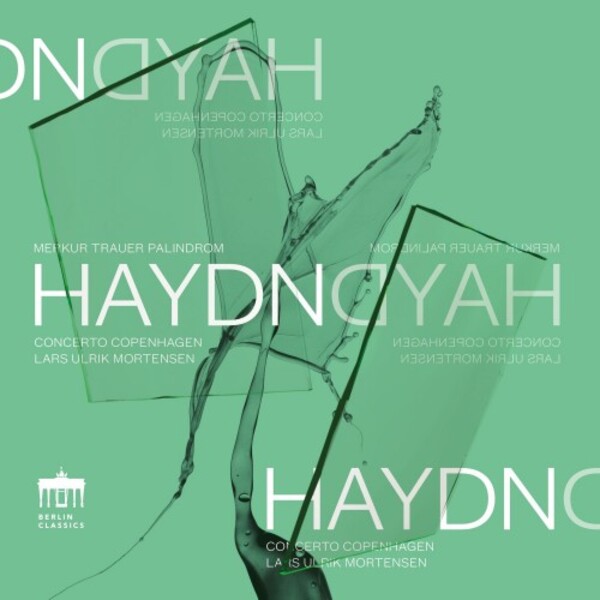HAYDN Symphonies Nos 43, 44 & 47 (Mortensen)
View record and artist detailsRecord and Artist Details
Genre:
Orchestral
Label: Berlin Classics
Magazine Review Date: AW2024
Media Format: CD or Download
Media Runtime: 71
Mastering:
DDD
Catalogue Number: 0303410BC

Tracks:
| Composition | Artist Credit |
|---|---|
| Symphony No. 43, 'Mercury' |
Joseph Haydn, Composer
Concerto Copenhagen Lars Ulrik Mortensen, Conductor |
| Symphony No. 44, 'Trauersinfonie' |
Joseph Haydn, Composer
Concerto Copenhagen Lars Ulrik Mortensen, Conductor |
| Symphony No. 47, 'Palindrome' |
Joseph Haydn, Composer
Concerto Copenhagen Lars Ulrik Mortensen, Conductor |
Author: Richard Wigmore
Taking his cue from Haydn’s Esterházy forces in the early 1770s, Lars Ulrik Mortensen opts for chamber-scale readings based on just nine strings (3.3.1.1.1). The chamber-musical intimacy of the slow movements, with their silvery muted violins, is especially appealing. For my taste the sublime Adagio of the Trauer trips along a little too easily. But here and elsewhere Mortensen makes Haydn’s filigree violin-writing delicately expressive rather than merely decorative. The gentle washes of colour from oboes and horns, perfectly balanced with the strings, are as magical as you could wish.
In the fast movements I sometimes craved more firepower than six violins can muster. Small forces and a cautious interpretation of Haydn’s Presto marking make the desperate, driving sequences in the finale of the Trauer less elementally exciting than in other period or period-influenced versions, above all Trevor Pinnock and Thomas Fey. I also wanted more string weight in the raucous, Hungarian-spiced tuttis in No 47’s finale. The first movement, whose marching dotted rhythms caught Mozart’s eye, has a dignified elegance – airy lightness, too, in the second theme’s dancing triplets. Again, though, Pinnock and Fey are faster and hungrier, and more willing to let the braying horns have their head.
Perhaps the obscurely named Mercury, the quintessential Austrian chamber symphony, comes off best here. The outer movements combine a fiery impetus (bass lines always lithe and strongly directed) with characteristically graceful shaping of the cantabile themes. And the lusty, one-in-a-bar swing of the Minuet – faster than either Pinnock or Fey – sets the feet tapping.
Of my two chosen comparisons, both using around double the forces of Concerto Copenhagen, Pinnock adds his own discreetly balanced harpsichord continuo (if Fey uses a harpsichord it’s inaudible). Fey’s slow movements have a unique dreamlike shimmer, though in fast music he can be by turns viscerally thrilling and plain perverse. If Pinnock is hard to beat in these superb symphonies from 1771 72 – vintage years for Haydn – I’m glad to have heard Mortensen’s chamber-scale performances: natural, affectionately shaped and brilliantly dispatched by the crack Copenhagen band.
Discover the world's largest classical music catalogue with Presto Music.

Gramophone Digital Club
- Digital Edition
- Digital Archive
- Reviews Database
- Full website access
From £8.75 / month
Subscribe
Gramophone Full Club
- Print Edition
- Digital Edition
- Digital Archive
- Reviews Database
- Full website access
From £11.00 / month
Subscribe
If you are a library, university or other organisation that would be interested in an institutional subscription to Gramophone please click here for further information.




